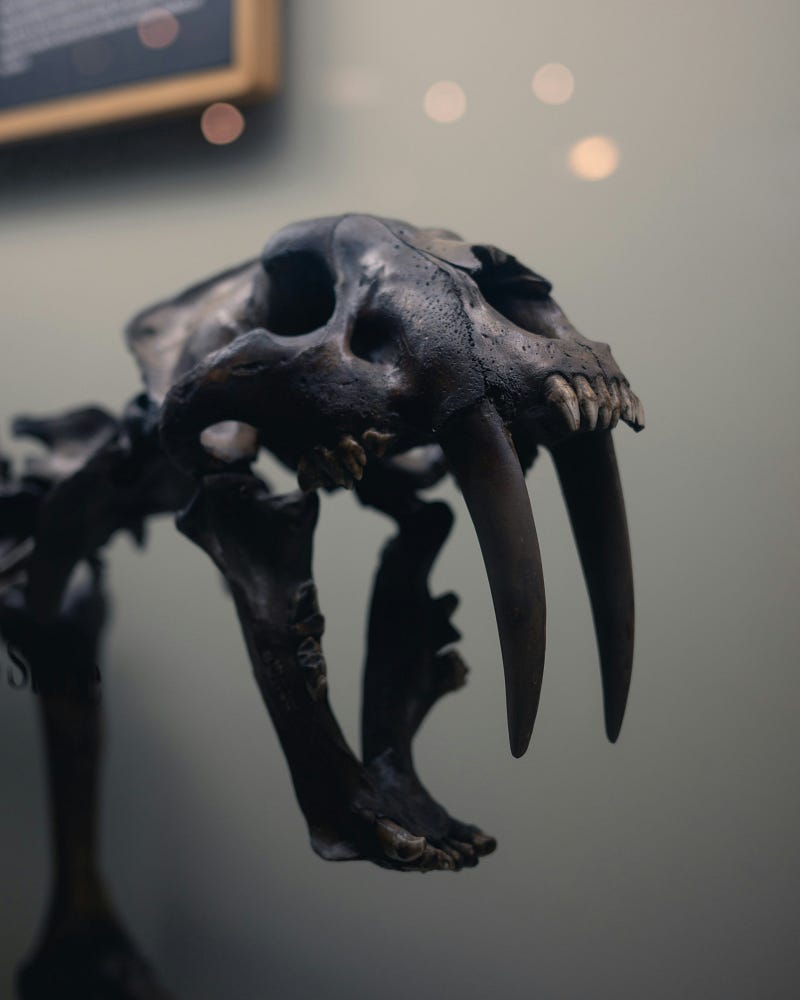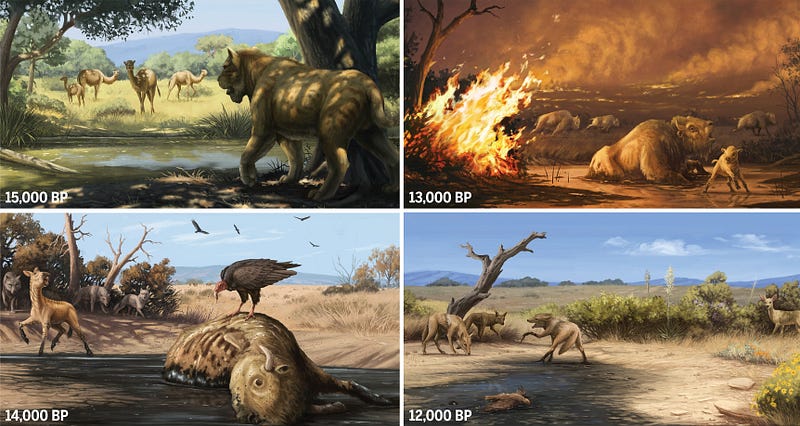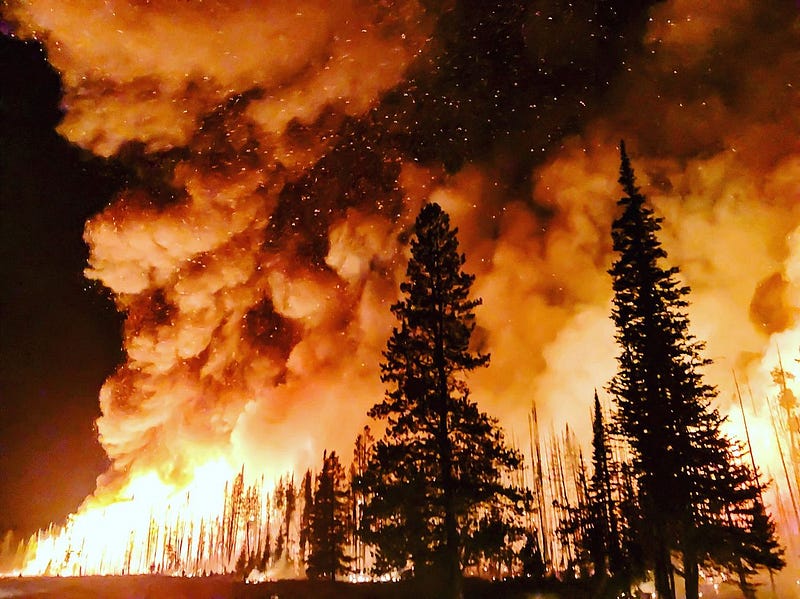The Impact of Ancient Fires on North America's Megafauna Extinction
Written on
Chapter 1: The Megafauna Crisis
Around 13,000 years ago, North America's megafauna—large animals weighing over 45 kilograms (99 lb)—was already facing significant challenges. Climatic shifts rendered global ecosystems fragile, pushing these massive creatures toward extinction, exacerbated by human activity that ignited a series of devastating fires, leaving them with no means of escape.
Previously, the true reasons behind the extinction of large mammals at the end of the Pleistocene, around 12,000 years ago, were unclear to researchers. However, it was evident that rapid ecosystem changes occurred, leading to the abrupt disappearance of these animals, such as saber-toothed tigers. Recent studies indicate that, much like the present day, numerous fires ignited due to elevated temperatures, triggering a cascade of biological and environmental crises.
The fossils unearthed at the La Brea Tar Pits in Southern California played a pivotal role in this research. This site, known for its tar pits that ensnare various animals including saber-toothed tigers, offers a unique window into life during that era.
Among the diverse species discovered in the tar pits are coyotes, bison, and the American lion, among others. Over time, these remains have been subjected to radiocarbon dating, which has proven invaluable. The tar preserved the collagen in the bones, allowing for more accurate dating compared to typical fossilization processes.

Photo by Patrick Perkins on Unsplash
La Brea has revealed even more astonishing findings over the years. Alongside animal fossils, researchers have identified plant remnants, including pollen, and numerous signs of fires and human activities, suggesting that the environmental changes at the end of the Pleistocene coincided with human arrival in the area. Interestingly, the human population appears to have surged during a period of severe drought.
Intense fires ravaged the landscape, transforming once lush vegetation with species like drought-resistant oaks and junipers into grasslands and shrubs that favored fire spread. This transformation was particularly pronounced between 14,000 and 13,000 years ago.
During this timeframe, the climate was characterized by extreme heat and dryness, with temperatures rising by approximately 5.6°C. As a result, junipers and oaks were replaced by more fire-tolerant pines and chaparral, leading to the loss of shelter for larger animals and diminishing their ability to escape the heat. Furthermore, these changes disrupted food chains and altered water flow, affecting animal migration routes.

Sequence of ecological events as recorded at Rancho La Brea, California. Top left: conditions around the tar pits were moist and cool, with abundant trees and megafaunal mammals. Bottom left: the onset of postglacial warming and drying begins as human pressure on herbivores increases. Top right: the synergy between climatic and human impacts enables a sudden ecological state transition characterized by unprecedented fire activity. Bottom right: a chaparral ecosystem is established; megafauna are extinct, and only coyote entrapment continues at the tar pits. Illustrations by C. Townsend, courtesy of the Natural History Museums of Los Angeles County.
Humans entered these ecosystems already stressed by climate change, igniting fires that primarily decimated large herbivores. The flammable undergrowth created a chain reaction, making it difficult to control the fires, which lasted 200 to 300 years. Consequently, the surrounding environment was engulfed in flames, leading to the extinction of the local megafauna.

Modern fire. Credit: rawpixel.com
The extinction of megafauna represents a significant ecological and paleontological disaster. However, as we continue to uncover details about this relatively recent past, we may be able to apply our current understanding to prevent a similar crisis today.
Chapter 2: The Role of Catastrophic Events
This video, titled "The Day the Mesozoic Died: The Asteroid That Killed the Dinosaurs," explores the catastrophic events that led to mass extinctions, including the demise of the dinosaurs.
The second video, "Experience the Disaster that Wiped Out Dinosaurs," provides an immersive experience of the events that contributed to the extinction of these ancient creatures.